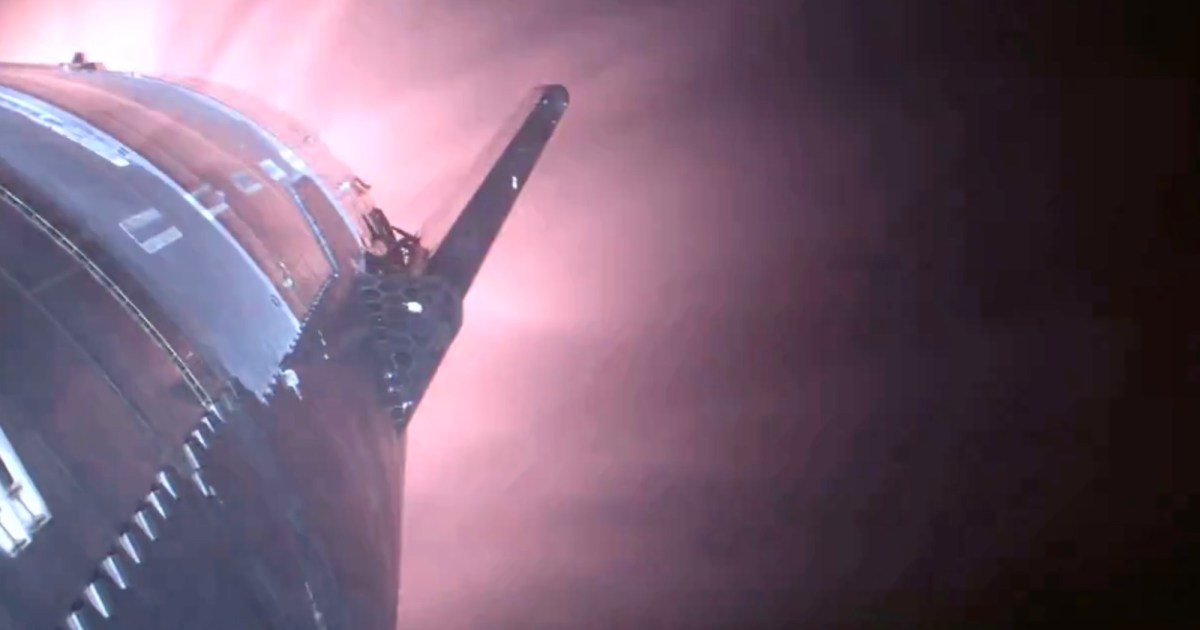SpaceX’s Super Heavy rocket was the star of the show during last week’s test flight after being successfully caught by the launch tower’s giant mechanical arms at the first attempt.
Minutes earlier, the Super Heavy booster had deployed the upper-stage Starship spacecraft to orbit as part of the fifth test flight of the world’s most powerful rocket.
While we’ve heard less about it, the spacecraft also enjoyed a wild ride, coasting to the other side of the world from the launch site in Boca Chica, Texas, before performing a landing burn and coming down in the Indian Ocean. Even better, it descended precisely to SpaceX’s targeted landing spot, with a camera-equipped buoy in place to record its final burn and splashdown about 65 minutes after launch. You can watch Starship’s final moments in the video below:
Starship flip maneuver and landing burn on its fifth flight test. Vehicle improvements ensured flaps were protected from high heating, resulting in a controlled entry and high accuracy splashdown at the targeted area in the Indian Ocean pic.twitter.com/nLIQLLVMv1
— SpaceX (@SpaceX) October 18, 2024
“Starship executed another successful hot-staging separation, igniting its six Raptor engines and completing ascent into outer space,” the Elon Musk-led company said in a message accompanying the recently shared footage. “It coasted along its planned trajectory to the other side of the planet before executing a controlled reentry, passing through the phases of peak heating and maximum aerodynamic pressure, before executing a flip, landing burn, and splashdown at its target area in the Indian Ocean.”
In a post on its website, SpaceX said the team behind the Starship’s most recent test flight should “take pride in the engineering feat they just accomplished. The world witnessed what the future will look like when Starship starts carrying crew and cargo to destinations on Earth, the moon, Mars, and beyond.”
In an upcoming test flight, SpaceX said it plans to catch the Starship spacecraft in the same way that it secured the Super Heavy booster during its most recent test. The spacecraft also has the capability of landing upright on the ground, a feat it will have to perform when it reaches other celestial bodies, including the moon as part of the Artemis III mission currently scheduled for 2026 and which will involve returning humans to the lunar surface.

